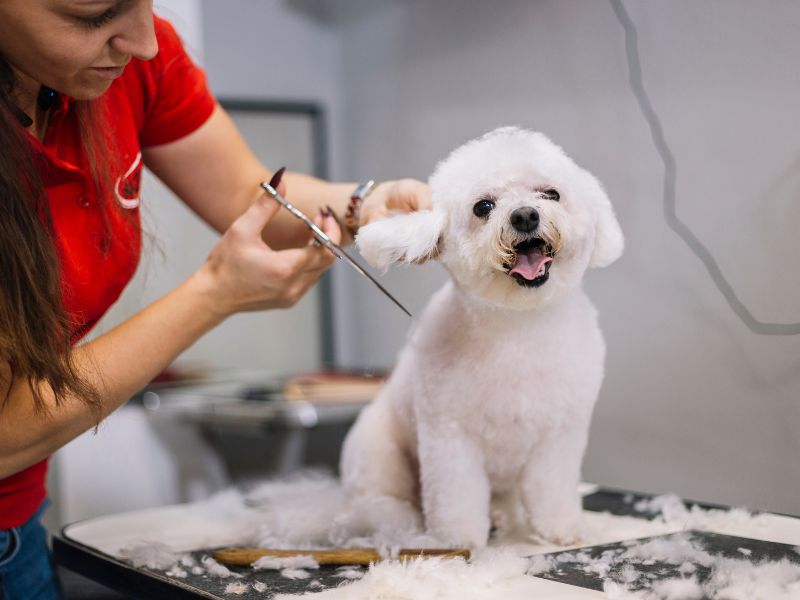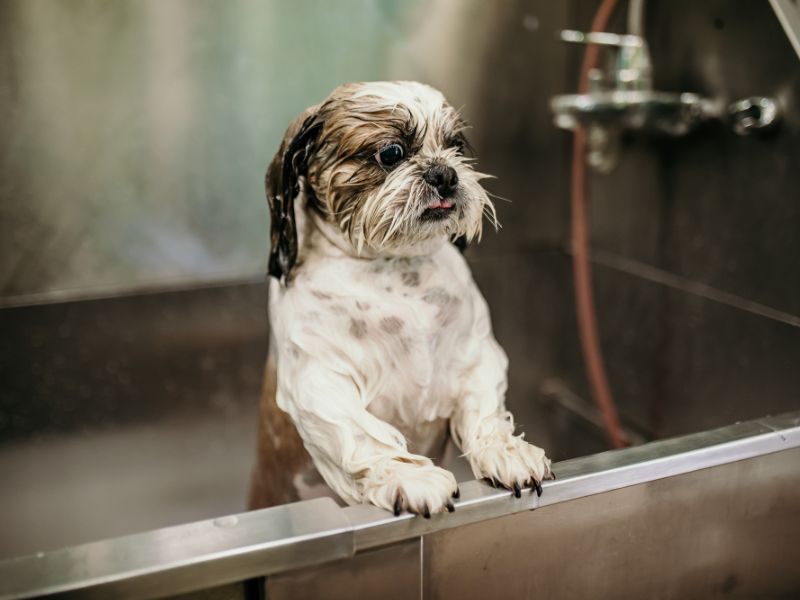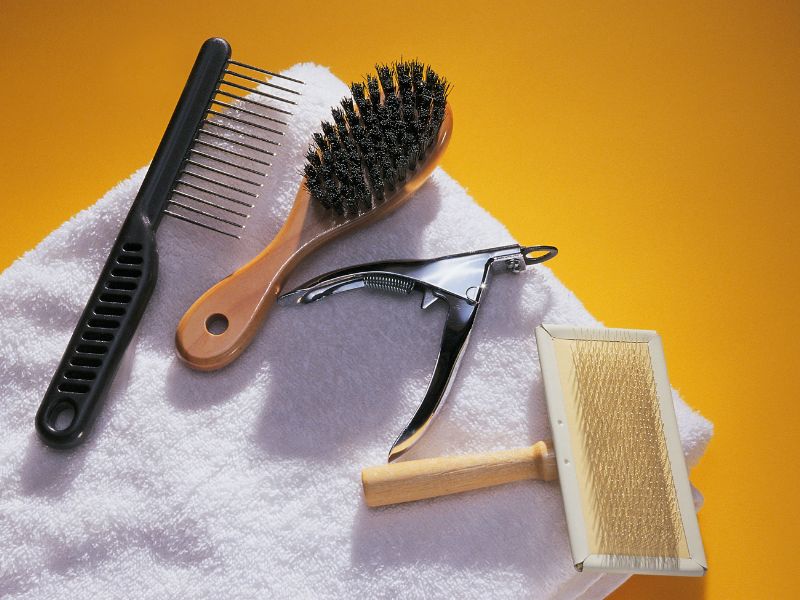Grooming your dog regularly is vital to ensure they stay clean, healthy, and comfortable. It also helps to prevent mats, tangles, and skin problems that can affect your dog’s well-being. However, you don’t need to spend a fortune on professional groomers or fancy tools to groom your dog at home. With some basic supplies and a little patience, you can give your dog a basic grooming that will keep them looking and feeling great. Here are some tips on how to groom your dog at home.
What You’ll Need
Before you start grooming your dog, make sure you have everything you need in one place. Here are some of the essential items you’ll need:
– A comb or a brush suitable for your dog’s coat type. A standard slicker brush is appropriate for most breeds, but you may also need a steel comb, a pin brush, or an undercoat rake for dogs with long or thick fur.
– Dog-specific shampoo and conditioner. Never use human products on your dog, as they can irritate their skin and eyes. Choose a mild, hypoallergenic shampoo that is suitable for your dog’s skin and coat condition. You may also want to use a conditioner to moisturize and detangle your dog’s fur.
– A pair of scissors or clippers. If you need to trim your dog’s coat, you’ll need a pair of sharp scissors or clippers designed for dogs. Human hair clippers often have very short blades that can injure your dog or leave their skin exposed. You may also need a pair of thinning shears to blend the edges of the cut and create a natural look.
– A nail clipper or grinder. Keeping your dog’s nails trimmed is important for their health and comfort. Long nails can cause pain, injury, and deformity in your dog’s feet. You’ll need a nail clipper or grinder that is suitable for your dog’s nail size and shape.
– A toothbrush and toothpaste. Dental hygiene is essential for your dog’s overall health. Brushing your dog’s teeth regularly can prevent plaque, tartar, bad breath, and gum disease. You’ll need a soft-bristled toothbrush and a toothpaste made for dogs. Never use human toothpaste on your dog, as it can contain ingredients that are toxic to them.
– A towel and a hairdryer. After bathing your dog, you’ll need to dry them thoroughly with a towel and a hairdryer. Make sure the hairdryer is set on low heat and low speed, and keep it at least six inches away from your dog’s skin. You may also want to use a brush or a comb to smooth out your dog’s fur as you dry it.

How to Groom Your Dog
Once you have all the necessary tools, you can start grooming your dog following these steps:
1. Brush Your Dog’s Coat
The first step of grooming your dog is to brush their coat thoroughly to remove any loose hair, dirt, dandruff, and mats. Start from the head and move down the body, following the direction of the hair growth. Be gentle and careful around sensitive areas like the ears, eyes, belly, and genitals. If you encounter any tangles or mats that you can’t brush out, use scissors or clippers to cut them out carefully. Praise your dog and reward them with treats as you brush them to make the experience positive and enjoyable.
2. Bathe Your Dog
The next step is to bathe your dog with warm water and shampoo. Choose an area where you can easily rinse your dog without making a mess, such as a bathtub, a sink, or a shower. Wet your dog’s coat thoroughly with water, avoiding the ears and eyes. Apply shampoo to your dog’s body and massage it into their fur. Rinse off the shampoo completely with water. If needed, apply conditioner to your dog’s coat and leave it on for a few minutes before rinsing it off. Dry your dog with a towel and a hairdryer as described above.

See Also: Finding the Perfect Feeding Routine for Your Dog
And: How to Manage Your Dog’s Shedding Problem
3. Clip Your Dog’s Fur
If your dog needs a haircut, you can use scissors or clippers to trim their fur to the desired length. Before you start clipping, make sure your dog is calm and comfortable. You may want to have someone help you hold your dog still or distract them with treats. You may also want to use a grooming table or a mat to keep your dog from slipping or moving around.
Start by clipping the areas that are prone to matting, such as the ears, legs, belly, and tail. Use scissors or thinning shears to cut the hair around the eyes, ears, and mouth carefully. Use clippers to trim the rest of the body, following the direction of the hair growth. Avoid clipping too close to the skin or against the hair growth, as this can cause irritation or unevenness. Check your dog’s coat for any missed spots or uneven areas and correct them as needed.
4. Trim Your Dog’s Nails
The next step is to trim your dog’s nails to prevent them from growing too long and causing problems. You can use a nail clipper or a grinder to cut or file your dog’s nails to the appropriate length. Before you start trimming, make sure your dog is relaxed and cooperative. You may want to have someone help you hold your dog’s paw or distract them with treats. You may also want to use a towel or a mat to keep your dog from slipping or moving around.
Start by holding your dog’s paw firmly but gently and inspecting their nails. Look for the quick, which is the pink part of the nail that contains blood vessels and nerves. Avoid cutting or grinding the quick, as this can cause pain and bleeding. If your dog has dark nails, you may not be able to see the quick clearly. In that case, trim only a small amount of nail at a time and look for a dark dot in the center of the nail, which indicates that you are close to the quick.
Use a nail clipper or a grinder to trim or file your dog’s nails one by one, starting from the tip and working your way towards the quick. Stop when you see a white ring around the nail or when you reach the dark dot in the center of the nail. Be careful not to cut or grind too much at once, as this can cause splintering or cracking of the nail. If you accidentally cut or grind the quick, apply some styptic powder or cornstarch to stop the bleeding.
5. Brush Your Dog’s Teeth
The final step is to brush your dog’s teeth to prevent plaque, tartar, bad breath, and gum disease. You can use a soft-bristled toothbrush and a toothpaste made for dogs to clean your dog’s teeth gently and effectively. Before you start brushing, make sure your dog is comfortable and familiar with the toothbrush and toothpaste. You may want to let your dog lick some toothpaste off your finger or the toothbrush first to get them used to the taste and texture.
Start by holding your dog’s muzzle gently and lifting their lips to expose their teeth. Use a toothbrush and toothpaste to brush your dog’s teeth in small circular motions, focusing on the outer surfaces of the teeth. Try to reach all areas of your dog’s mouth, including the back teeth and the molars. Be gentle and patient with your dog and praise them for letting you brush their teeth. If your dog resists or gets stressed, stop and try again later.
Conclusion
Grooming your dog at home can be a rewarding and enjoyable experience for both you and your dog. It can also save you money and time on professional groomers. However, it is important to do it properly and safely to avoid hurting or upsetting your dog. By following these tips and steps on how to groom your dog at home, you can keep your dog clean, healthy, and happy.

